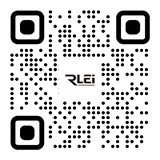Take you to understand the principle and use of intermediate relay, thermal relay, time relay and solid state relay
Publication Time:
2022-10-20 17:09
A relay is an electrical control device that can give a specified input and hold it long enough to cause a predetermined step change in the controlled quantity in the electrical output circuit. When the input is reduced to a certain level and maintained for a long enough time, it can be restored to the initial state.
Back in the 18th century, scientists thought that electricity and magnetism were two separate physical phenomena. In 1820, Danish physicist Oster discovered the magnetic effect of electric current, and in 1831, British physicist Faraday discovered the phenomenon of electromagnetic induction. These discoveries proved that electrical and magnetic energy could be converted into each other, laying the foundation for later electric motors and generators; With these inventions, human beings entered the age of electricity. In the 1830s, American physicist Joseph Henry invented the relay using the phenomenon of electromagnetic induction while studying circuit control. The earliest relay is electromagnetic relay, which uses the phenomenon of magnetic force generation and disappearance of electromagnet under power on and power off to control the opening and closing of another circuit with high voltage and current. Its appearance enables the remote control and protection of the circuit to be carried out smoothly. Relay is a great invention in the history of human science and technology. It is not only the basis of electrical engineering, but also the important basis of electronic technology and microelectronic technology. A relay is an electrical control device that can give a specified input and hold it long enough to cause a predetermined step change in the controlled quantity in the electrical output circuit. When the input is reduced to a certain level and maintained for a long enough time, it can be restored to the initial state.
Back in the 18th century, scientists thought that electricity and magnetism were two separate physical phenomena. In 1820, Danish physicist Oster discovered the magnetic effect of electric current, and in 1831, British physicist Faraday discovered the phenomenon of electromagnetic induction. These discoveries proved that electrical and magnetic energy could be converted into each other, laying the foundation for later electric motors and generators; With these inventions, human beings entered the age of electricity. In the 1830s, American physicist Joseph Henry invented the relay using the phenomenon of electromagnetic induction while studying circuit control. The earliest relay is electromagnetic relay, which uses the phenomenon of magnetic force generation and disappearance of electromagnet under power on and power off to control the opening and closing of another circuit with high voltage and current. Its appearance enables the remote control and protection of the circuit to be carried out smoothly. Relay is a great invention in the history of human science and technology. It is not only the basis of electrical engineering, but also the important basis of electronic technology and microelectronic technology.
Previous
Related News
The use of relays in our home is very important, which can provide the most basic life guarantee for home life. However, we should also pay attention to the use of relays to avoid unnecessary troubles. Then what is the function and principle of relay, and the correct use of relay, do you understand? Now let's find out.
Relay is a kind of electric control device, is when the change of the input quantity to meet the specified requirements, in the electrical output circuit to make the controlled quantity of a predetermined step change of an electrical appliance.
The new relay refers to the electromagnetic relay developed and produced in order to meet the new special requirements and meet the use under special environmental conditions. Its main characteristics are small volume, light weight, vibration resistance, shock resistance, load range from low level load to 5A, 28V rated load, and the product has reliability index (failure rate level) requirements. The product adopts resistance fusion welding or laser fusion welding sealing air-tight sealing structure, mainly used in electronic control equipment signal transmission and weak current power switching.
The impact of environment on the reliability of relays: the average time between failures of relays working in GB and SF is the highest, reaching 820000 hours, while in NU environment, it is only 60000hours.
There are many types of relays, which can be divided into voltage relay, current relay, time relay, speed relay and pressure relay according to the input quantity, electromagnetic relay, induction relay, electric relay and electronic relay according to the working principle, and control relay and protection relay according to the purpose. According to the input quantity change form can be divided into whether there is a relay and measuring relay.
The relay coil is represented in the circuit by a long box symbol, and if the relay has two coils, two long boxes are drawn side by side. At the same time, mark the relay word symbol "J" in or beside the long box. There are two ways to represent the contacts of relays: one is to draw them directly on one side of the long box, which is more intuitive.








